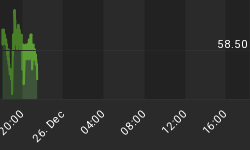The most recent establishment survey on monthly job losses reported a loss of 85,000 jobs in December. December's number showed considerable improvement from the peak loss of 741,000 jobs reported for January 2009. The steep decline in layoffs is not surprising given that over seven million jobs have been shed since the beginning of the recession. Although net job creation is possible in the coming months, an analysis of the labor market suggests that the US economy is structurally weak in light of a falling labor participation rate and a mix shift away from productive to nonproductive jobs.
The labor force is the sum of all employed and unemployed people who are actively seeking employment. When jobs are difficult to find, the unemployed become discouraged and discontinue their job searches, resulting in a contraction of the labor force as shown in Figure 1. The seasonally adjusted labor participation rate is now 64.6%, the lowest level since 1984. A declining labor participation rate also leads to an understated unemployment rate because workers who have stopped looking for a job are excluded from the unemployment rate.
Figure 1. Seasonally Adjusted Labor Participation Rate
Source: U.S. Bureau of Labor Statistics
Perhaps more disturbing than the falling labor participation rate is that jobs are being created increasingly in sectors that drain the net worth of society. Figure 2 shows the percentage of people employed by the government and healthcare sectors, which represents 30% of the employed US work force. While these segments are vital to a healthy society, they can only exist to the extent that the country can afford them.
Figure 2. Percentage of Non-Farm Payrolls in Government and Healthcare
Source: U.S. Bureau of Labor Statistics, Continental Capital Advisors, LLC
New jobs are being created disproportionately in nonproductive sectors of the economy that have above average wage growth. Figure 3 shows that wage growth in both government and healthcare jobs outstripped overall US wage growth since the start of 2001, with government and healthcare wages increasing 39% and 34%, respectively, compared to an increase of 30% for all workers.
Figure 3. Employment Cost Index
Source: U.S. Bureau of Labor Statistics, Continental Capital Advisors, LLC
The decline in US manufacturing jobs is striking (see Figure 4). In 1950, 31.5% of the workforce was in the manufacturing sector, whereas currently this sector represents 8.8% of the workforce. Though there are some benefits gained by exporting manufacturing jobs, the decline in manufacturing jobs further shows the structural weakness of the US labor market.
Figure 4. Manufacturing Workers as a Percentage of All Non-Farm Payrolls
Source: U.S. Bureau of Labor Statistics
Conclusion
The United States is in the midst of the worst economic contraction since the Great Depression, which has resulted in a rapid increase in unemployment. Recently, the unemployment rate has stabilized and job losses have slowed. Unfortunately, the areas of the economy that are adding jobs are those that deplete the country's net worth. While the probability of better headline employment numbers is high, the underlying trends demonstrate just how unbalanced and unstable the United States economy is today.















